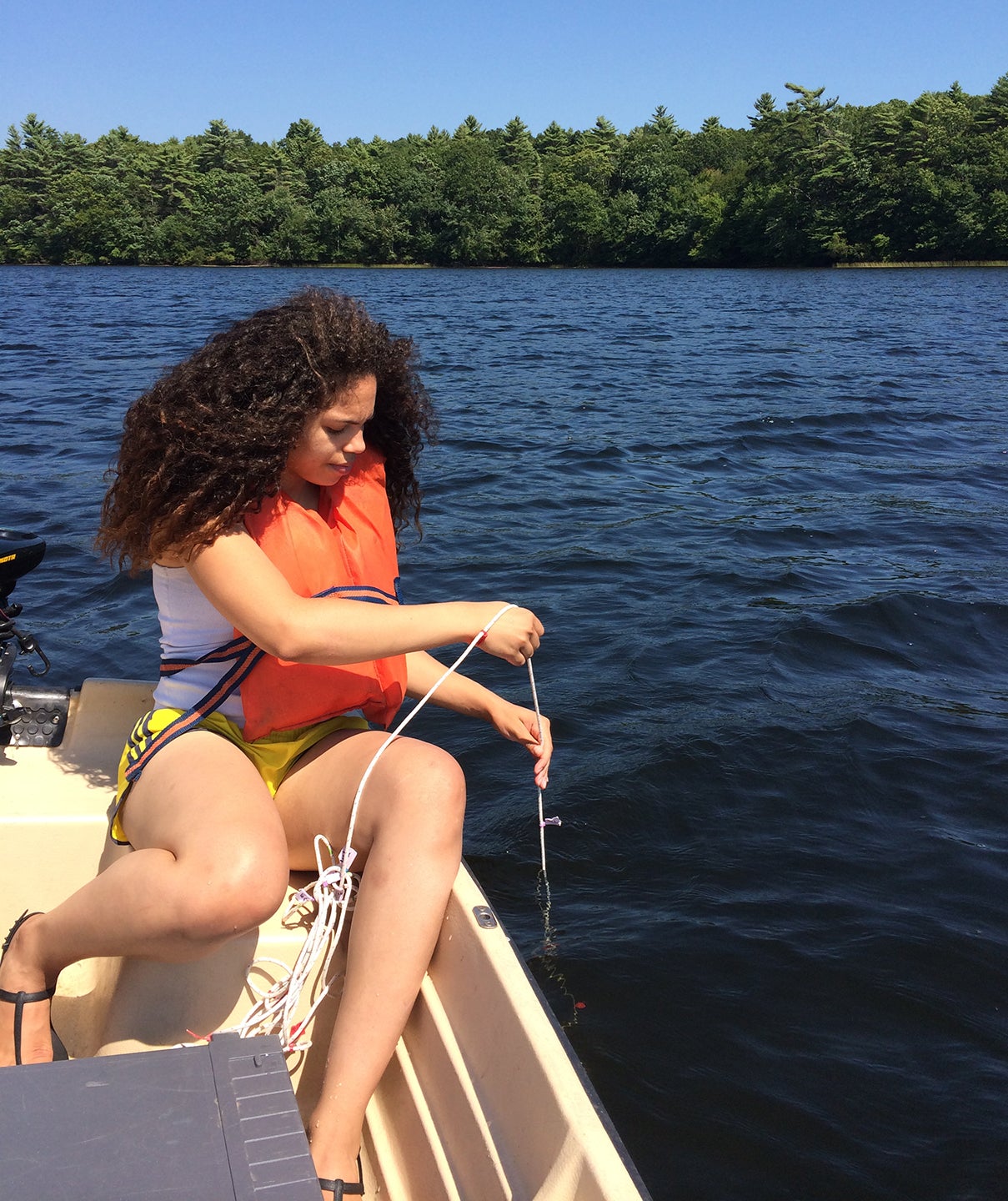Program has contributed to improving Rhode Island’s water quality for 35 years
By
Kate LeBlanc
 |
| Now in its 35th year, URI’s Watershed Watch program is recruiting citizen scientist volunteers to help monitor water quality statewide. (URI photo) |
Founded in 1987 and now in its 35th year, Watershed Watch is designed to provide information on surface water quality of lakes, ponds, reservoirs, rivers, streams and the marine environment throughout Rhode Island and southern New England.
To achieve this, Watershed Watch relies strongly on volunteers to
monitor these sites and collect data.
Watershed
Watch, sponsored by the URI Cooperative Extension, is recruiting new volunteers
to serve as site monitors. No experience is required, but volunteers are asked
to have one to two hours a week available at a time convenient for them to
dedicate towards monitoring. The monitoring season begins in May and ends
mid-October.
According
to Program Director Elizabeth Herron, the program is open to as many volunteers
as there are people interested. She estimates that 350 volunteers will return
to monitor again this year, overseeing some 220 sites throughout Rhode Island,
southern Connecticut and Massachusetts. Herron is specifically looking to
recruit additional volunteers for Gorton Pond and Sand Pond in Warwick as well
as other sites across the state.
“Having monitoring information enables our local communities to develop good policies, pass good ordinances, install remediation efforts, and do whatever it takes to be able to protect and restore our watersheds and coastal environment,” Herron said.
New volunteer field training will be offered online via asynchronous training videos, followed by a live zoom session to demonstrate techniques and answer questions.
Zoom sessions will last approximately two hours and are scheduled for Thursday, April 14, at 5 p.m. and Tuesday, April 19, at 3:30 p.m. Participation in only one live session is required. Additional sessions may be added if needed.
The videos and zoom will
help prepare volunteers for the field, showing them what they will be looking
for and demonstrating the use of monitoring equipment. Some of the differences
between monitoring sites will also be covered. For instance, some sites require
a canoe, kayak or boat to reach, whereas others can be reached by wading into
the water.
“Right
now we’re challenged with a lot of different things in terms of protecting
water quality,” Herron said. “We have increased land use, more people building
houses and building commercial property. All that has an impact on water
quality; climate change has an impact on water quality.”
Herron
suggests forming monitoring teams with family members or friends. If you feel
hesitant about successfully monitoring your site every month, Herron suggested
bringing a friend to the training and organizing a rotating schedule that works
for you.
Once
volunteers receive the proper tools and training, they set off to independently
monitor their lake, pond, river or stream according to schedules created for
each waterbody type or the needs of the local sponsoring organization. However,
they must return to URI three to six times a season to drop off their collected
samples for analysis in Watershed Watch’s state-certified lab as some tests
can’t be done in the field.
In
the program’s 35-year history, the data collected has helped make significant
water quality improvements in local cities and towns. According to Herron, the
data collection and findings from the sites have helped pass wastewater
management ordinances and instigated grants that helped to fund stormwater
runoff reduction projects.
Herron
emphasized that the monitoring program is not free, but it is “cost effective.”
The training itself is free of charge, and volunteers do not have to pay to
participate. There is an annual site registration fee that is typically paid by
a local organization to help support monitoring. Those organizations decide
which sites to monitor, and sometimes help coordinate the local volunteers.
Anyone interested in becoming a volunteer with the URI Watershed Watch program this May to October can sign up and find more information on the URI Watershed Watch site (uri.edu/watershedwatch/getting-involved) under New Volunteer Training.